Top 10 Largest Underground Salt Mines in the World by Producion
| Table of Contents |
Overview: Underground Salt Mine in the World Today
Although salt is readily available now, it was once a rare and expensive luxury item. Salt mining was done almost entirely by hand before the Industrial Revolution, and it was a very risky endeavor. The miners' short lifespan can be attributed to the rapid dehydration caused by their constant contact with salt and the "salt dust" that they breathed in. Slaves and inmates performed this labor. Because it was so difficult to extract, salt was a highly sought after sign of prosperity.
The mineral halite, found in rock salt, is typically mined from salt mines. Since less combustion is needed to extract rock salt, salt mining is safer than coal mining. It's estimated that hundreds of salt mines are currently in operation across the globe, with major corporations like Compass Minerals and Cargill owning or managing the vast majority of them. Some of the world's largest salt mines can be found in China, the United States, and India, which are also the top three producers of salt. The Sifto Salt Mine in Goderich, Ontario, Canada, is the largest underground salt mine in the world.
Currently, the world's ten largest salt mines are as follows:
1. Sifto (Goderich) Salt Mines in Ontario, Canada
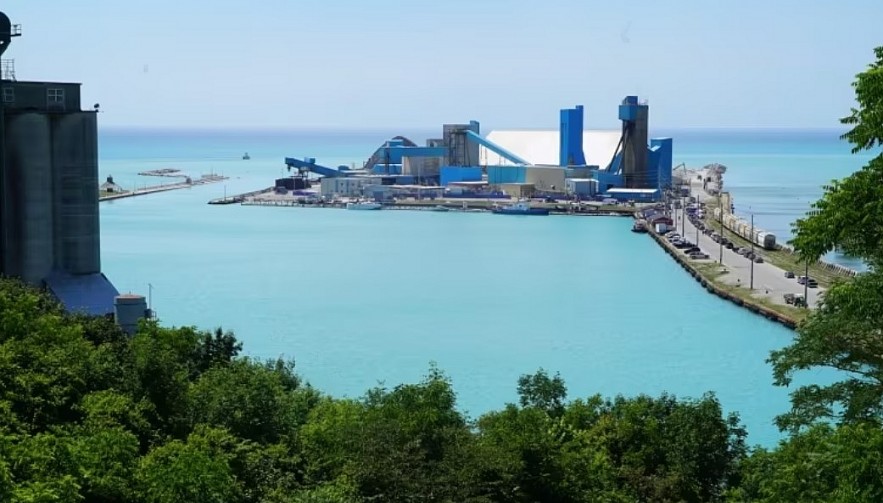 |
| Sifto Salt Mine in Goderich |
The largest underground salt mine in the world is the Sifto Salt Mine in Goderich. The mine, which has been in operation since 1959, is situated 1,800 feet beneath Lake Huron in the Canadian province of Ontario. It spans an area of 2.7 million square miles, is more than 1.5 miles wide, and is more than 2 miles long. Each year, the Sifto Salt Mine produces more than 7 million tons of rock salt, which is sufficient to supply the Great Lakes region. Additionally, the salt is packaged at the nearby Compass Mineral facility and shipped across North America. Additionally, the Compass Minerals Plant sells salt in bulk to producers of plastics and other goods. During the winter, salt is also used to de-ice icy roads in towns and cities all over the Great Lakes region.
Deep beneath Lake Huron's surface is where you can find the Sifto Salt Mine. The mine was once equipped with a bus system that took employees to their various underground workstations because it can house more than 400 people. However, the mine is currently accessible via more than 30 different routes, making the workstations. Around 400 million years ago, an ocean covered the Lake Huron basin and left deposits of salt underground. The mine has a crushing plant, dump trucks, a service depot, rooms for electric transformers, and lunchrooms for the workers. Sam Platt made the discovery of the salt mine in 1866 while looking for oil.
It can be difficult to mine salt underground, especially if the mine is submerged. The procedure has been mastered by miners at the Sifto Salt Mine, though. The salt is removed by the miners by sinking shafts through the salt deposits in the rock above. The remnants are a large square cavern with salt pillars interspersed. "Room and pillar" mining is the name of this method of mining. Although most rooms are 60 feet by 60 feet in size, the size of the room varies depending on how thick the salt deposit is.
Since 1867, the Goderich plant has been in operation. Compass Minerals, a US-based multinational corporation and the top producer of minerals like magnesium and salt, runs the plant, which is situated about 4 kilometers from the mine. The mine's rock salt is primarily turned into fine-coarse grain salt through mechanical evaporation. At the facility, the salt is packaged before being transported to various locations.
2. Khewra Salt Mines in Pakistan
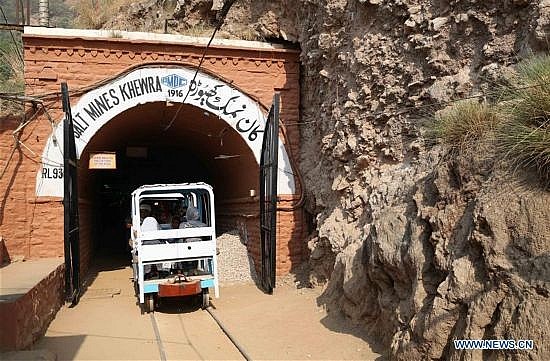 |
| Khewra Salt Mines in Pakistan |
Alexander the Great is credited with finding the Khewra Salt Mines in 326 BC. That's not exactly true, though. His horse deserves all the credit for finding the salt in Khewra. This is due to the fact that Alexander's horse and the horses of his soldiers started licking the stones on the ground when his army stopped to rest in Khewra. A brave soldier gave it a shot and tasted the saltiness for himself.
The salt mines in Khewra are currently the second largest in the world. Every year, they produce 325,000 tons of salt. An estimated 220 million tons will be produced over the course of its lifetime. Amazingly, this barely makes a dent in the estimated 6.687 billion tons of salt that is stored here. The mine has 11 stories and a depth of 748 feet. Its tunnels extend nearly half a mile into the mountain. In the massive mine, only 50% of the material is actually mined; the other 50% is used as support columns.
3. Prahova Salt Mine in Romania
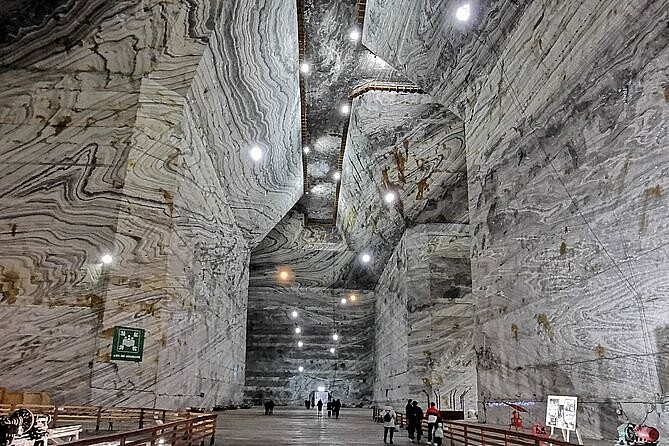 |
| Prahova Salt Mine in Romania |
The Prahova Salt Mine holds the title of being Europe's biggest salt mine. It has much more interesting uses now and is no longer used for industrial purposes. That is for excursions for healing and medical care.
The public can view it in 14 breath-taking galleries, no pun intended. In fact, some respiratory infections can be treated by going to the salt mine! You can find salt-carved busts, sculptures, and motifs in these galleries, including one of Decebal, the last King of the Dacians. These people served as the Romanian people's ancestors. The galleries are higher than the Statue of Liberty (without the foundation), at over 55 meters high.
4. Atacama Salt Flat in Chile
The Atacama Salt Flat, also known as Salar de Atacama, is the biggest salt flat in Chile. It has no drainage source and is encircled by mountains and volcanoes. Despite being the biggest in Chile, the Atacama Salt Flat produces lithium, a salt derivative.
Ulexite and double or triple salts of lithium sulfate are both produced by extracting lithium and boron from the brine of the Salt Flat. This takes place in the salt flat's southern section. With 2017% of the world's lithium reserves, the Atacama Salt Flat is the biggest and purest active source of lithium in the world. About 36% of the world's supply of lithium carbonate was produced there as of 2017.
Video: Atacama in Chile - Biggest Salt Flat in the World
5. Wieliczka Salt Mine in Poland
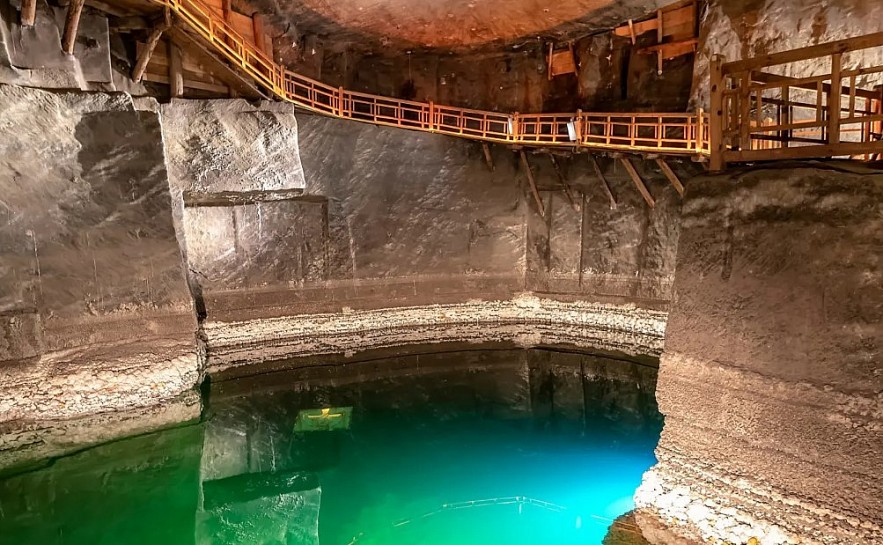 |
| Wieliczka Salt Mine in Poland |
Poland's Wieliczka Salt Mine is a National Landmark and a World Heritage Site. It is now primarily used as a tourist destination rather than as an industrial mine. The Miocene Era, or roughly 13.6 million years ago, is when the dark gray salt deposits first appeared. The salt in Wieliczka was first mentioned in the 12th century, when a Benedictine Monastery was given access to salt from the mine. From the 13th century until 1996, when the formal industry was shut down, the mine was in operation. Even the German occupation from 1939 to 1944 did not destroy it.
The Franz Joseph I Chamber's Holy Cross Chapel is the mine's well-known chapel. As a sacrifice for the decades-long struggle against flooding in the lower levels brought on by disastrous magnesium potassium mining, it was constructed in 1871. The mine is a very popular tourist destination because it also has a Crystal Grotto in the lower levels and old saline baths.
6. Palibelo Village in Indonesia
One of Indonesia's most valuable commodities is produced in large part at the Bima Salt Pans on the island of Sumbawa. Bima Bay's salt pans are almost 7 square miles in size and have been making salt for centuries.
Throughout the Indonesian archipelago, Bima salt has long been traded. Additionally, it's thought that Bugis sea gypsies traveled to Malaysia and the Philippines carrying Bima salt. Despite being one of the most essential commodities on the island today, the production of Bima salt is still primarily a cottage industry. This is so that salt pans can be manually farmed by single families or even small cooperatives.
7. Danakil Salt Pan in Ethiopia
Due to its climate that defies reality, the Danakil Salt Pan is one of the most famous salt pans in the world. The salt pan is known as "The Gateway to Hell" because it is thought to be the hottest place on Earth where people can live. Since some of the Danakil is below 300 feet below sea level, it has formed a volcano-rimmed cauldron with summer lows of 120 degrees.
The Afar people still enter the cauldron in the early morning hours, when the temperature is only 50 to 60 degrees Celsius, to remove blocks of salt from the 800 mm thick layer. Previously used as a form of currency in Ethiopia, salt blocks are now widely available. They frequently provide farmers who use them to give livestock the minerals they need.
8. Maras Salt Mine in Peru
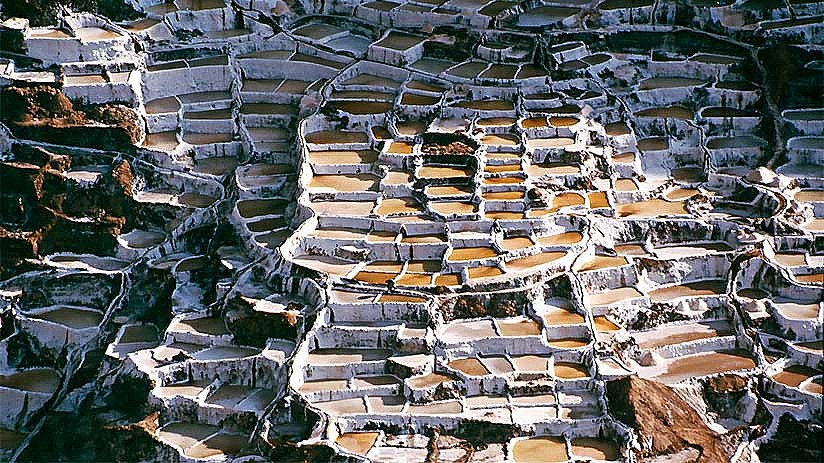 |
| Maras Salt Mine in Peru |
These salt terraces in Peru were once a prized possession of the Inca. Heavy silts and salts are carried by an underground spring that feeds off of the mountain range's water and collect in the ponds along the cliffside. Native Americans then harvest the salt. It is extremely challenging to get to the ponds because workers must travel through the Urubamba valley. Except for the most daring of travelers, the crevasses are enough to make them turn around.
The channels used to flood the Inca terraces are still in use. The rich pink salt produced in this Peruvian valley once supplied ancient Incan capitals.
9. Asse Salt Mine in Germany
In the last ten years, there has been a lot of controversy surrounding the Asse Salt Mine. From 1906 to 1965, rock salt and potassium were mined in this set of mines. The state took control of the site after it shut down to experiment with the idea of storing radioactive waste.
About 125,000 barrels of low- and medium-level radioactive waste were kept in the mines between 1967 and 1978. But according to some media reports from 2008, contaminated brine had been pumped all the way to the bottom of the mine caverns. This was due to the possibility of rust corroding the barrels and causing leakage into the water due to the region's groundwater breaching the caverns. This raised serious concerns, especially if the mine flooded.
Additionally, the instability of the mountain itself is what is causing the cracks and flooding. There is concern that the caverns will completely cave in. The removal of the barrels, which could take years, was decided upon in 2010. It might be more practical to leave the barrels down there, though there is a risk of exposure to nearby residents.
Nevertheless, if you travel to Germany, you can visit this radioactive salt mine.
10. Cathedral of Salt in Colombia
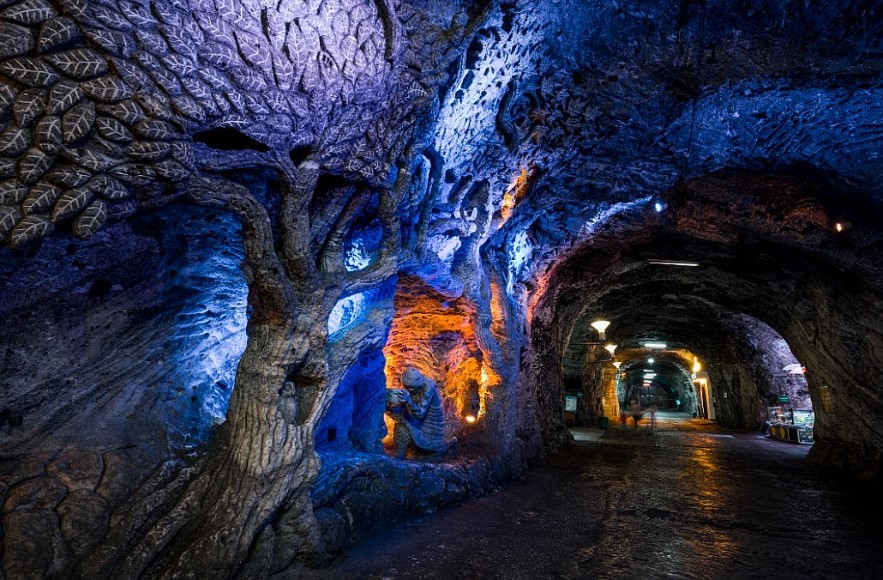 |
| Cathedral of Salt in Colombia |
The biggest salt mine in Colombia is called the Cathedral of Salt. It is made from salt deposits that have been mined at Zipaquira since the fifth century BCE. After being inspired by a small cathedral built in the mines by workers, the Cathedral was carved out of a working salt mine in 1950. In 1954, the first cathedral was dedicated. Authorities, however, decided to close the active cathedral in 1990 after questions about its structural integrity in a running mine were raised. The nearby town, however, was unfazed and started work on a new cathedral 200 feet below the old one. It was finished in 1995.
A huge cross has been carved into the back wall of the current cathedral, which is 75 meters long and 25 meters tall. The cathedral can hold up to 10,000 people when it is fully occupied, and on most Sundays, it receives more than 3,000 visitors.
 How To Defrost Meat By Vinegar And Salt Water Without Microwave How To Defrost Meat By Vinegar And Salt Water Without Microwave If you think using microwave is the only way to defrost meat, you’re wrong. Try two ways recommended in the article to defrost meat without ... |
 What Are Benefits Of Salt And Shampoo Mixture? What Are Benefits Of Salt And Shampoo Mixture? Have you ever mixed salt with shampoo? Two things that seem unrelated can bring you lots of benefits. Try on these salt and shampoo hacks. |
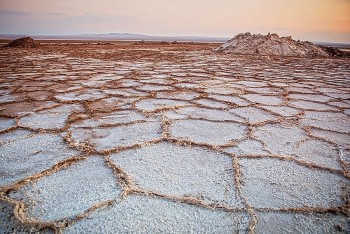 Top 10+ Largest & Majestic Salt Flats in the World Top 10+ Largest & Majestic Salt Flats in the World The largest salt fields in the world not only provide salt, but also a famous tourist destination that you should explore. |
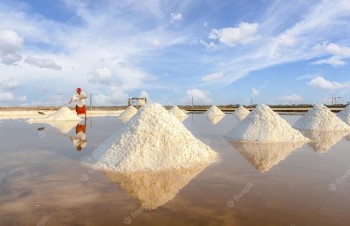 Top 10 Countries with the Most Salt Producing & Exporting in the World Top 10 Countries with the Most Salt Producing & Exporting in the World Let's discuss the world leading countries in salt production and salt export today. |























